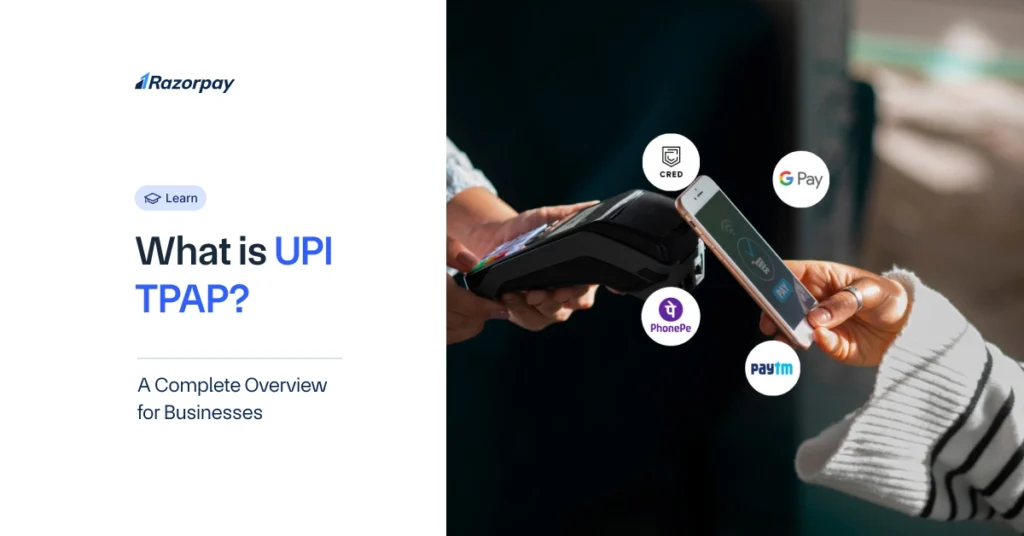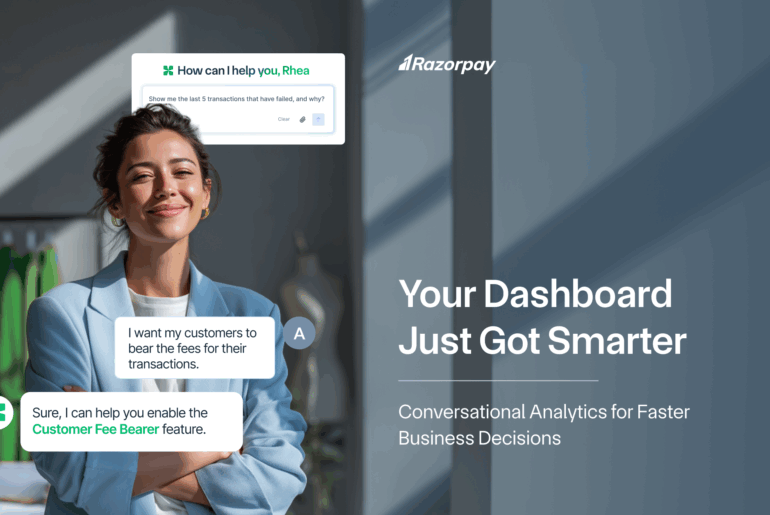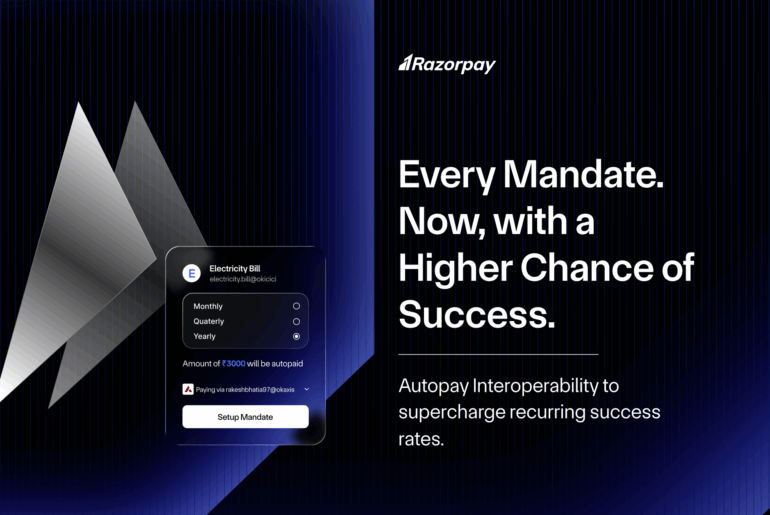Ever wondered about how your favorite UPI apps were built? Curious about how you can build your own UPI App? Well, you’ve come to the right place. This article will deepdive into what UPI Apps or third-party Apps are, and how you can become one.
What is UPI Third-Party App?
A TPAP is a service provider (not necessarily a bank) that develops and offers UPI-compliant mobile applications to end-users to facilitate UPI transactions. They participate in the UPI ecosystem by leveraging one or more PSP Banks that handle payment processing with NPCI. Examples of UPI TPAPs, commonly known as UPI Apps, are Google Pay, PhonePe, PayTM, Supermoney, Cred etc.

The Evolution of TPAPs in India’s UPI Ecosystem
The role of Third-Party Application Providers (TPAPs) in India’s Unified Payments Interface (UPI) ecosystem has rapidly evolved in recent years, largely due to the widespread adoption of this technology. From 2016 to 2024, around 20 TPAPs were launched. In just the last two years alone, this number has doubled, bringing the total to 40 TPAPs with over 20 new additions.
What began with standalone UPI apps like Google Pay and PhonePe has now expanded significantly to include super apps, neobanks, fintechs, and sector-specific applications that are integrating UPI directly into their user experiences.
This growth reflects a broader shift: more businesses today want to own the UPI payment experience within their own ecosystems, rather than redirecting users to third-party apps. Whether it’s an e-commerce platform, a food delivery app, or a digital wallet, becoming a TPAP allows businesses to offer a more seamless, branded payment flow, keeping users within their own interface.
As UPI becomes increasingly embedded in everyday transactions, TPAPs are no longer just payment applications; they’ve become a strategic layer in the digital customer experience.
The Rise of TPAPs: Who’s Adopting and Why?
Over the last few years, India has seen a significant increase in businesses taking on the Third-Party Application Provider (TPAP) role. This newer wave of TPAPs includes a wide variety of platforms, from super apps to fintech startups and even traditional enterprises expanding into digital payments.
Here are some examples of businesses becoming TPAPs:
- Fintechs powering new use-cases: These are startups and digital-first financial platforms that build innovative experiences around credit, savings, or investments, embedding UPI to complete the transaction loop. Examples include Slice, Fi, and Bajaj Finserv.
- Super apps building embedded payment experiences: Super apps already have a wide user base and multiple services. UPI integration helps them drive engagement and make payments seamless across their ecosystem. Tata Neu and Amazon Pay are good examples.
- Industry leaders simplifying user experience: Established platforms with strong brand recognition are adopting UPI not just to expand their service offerings, but also to reduce friction and stay competitive in a digital-first market. Mobikwik and Truecaller illustrate this trend.
Why Are Businesses Becoming TPAPs?
So, why are so many businesses choosing to become TPAPs? The reasons are both strategic and operational, offering several key advantages:
- Full control over the UPI user journey: Businesses can offer a native and branded experience, from handle creation to in-app payments.
- Reduced dependency on third-party apps: There’s no need to redirect users to apps like Google Pay or PhonePe to complete a transaction.
- Lower drop-offs at checkout: Keeping the payment flow within the app minimizes friction and improves conversion rates.
- Improved customer trust: A consistent, end-to-end experience builds credibility and reliability.
- Deeper data and insights: Businesses gain better visibility into customer payment behavior, transaction trends, and potential drop-off points.
- Stronger retention loops: UPI becomes an integral part of the broader product experience, increasing daily touchpoints with the user.
As you can see, beyond just enabling payments, becoming a TPAP is now a strategic move for businesses serious about owning their customer experience end-to-end.
How Are Businesses Becoming TPAPs?
Once a business decides to become a TPAP, there are typically two routes it can take to get there:
Go Direct via a PSP Bank
In this path, businesses work directly with a UPI-enabled bank (also known as a PSP bank) to integrate UPI capabilities from scratch. This means:
- Establishing a direct partnership with a PSP bank.
- Undergoing technical and compliance checks with NPCI.
- Building and maintaining the entire UPI backend infrastructure in-house.
- Managing ongoing bank coordination, upgrades, and audits independently.
While this route offers complete ownership over every part of the UPI stack, it also demands significant engineering bandwidth, compliance rigor, and financial investment.
Partner with a UPI TPAP Enabler like Razorpay
Many businesses today are opting for a faster, more scalable alternative—working with a UPI TPAP enabler like Razorpay TPAP Pro. In this model:
- The heavy lifting—bank integrations, tech certifications, and regulatory compliance—is already taken care of.
- Businesses get a ready-to-integrate platform with robust infrastructure, pre-certified APIs, and multi-bank access.
- Go-live timelines are significantly reduced, often taking less than a month.
- Ongoing support, monitoring, and upgrades are managed by the enabler, letting your team focus on product and customer experience.
This route is ideal for businesses that want to deliver a top-notch UPI experience without the overhead of building and maintaining infrastructure themselves.

Frequently Asked Questions (FAQs)
1. Are UPI TPAP transactions secure?
Yes, UPI TPAP transactions are highly secure—protected by end-to-end encryption, two-factor authentication, and compliance with strict NPCI security guidelines.
2. How long does it take to integrate as a UPI TPAP?
Typically, it takes 2 to 3 months to complete the full integration and approval process, depending on your technical readiness and bank partnerships.
3. Can UPI TPAPs process cross-border payments?
No, UPI is currently designed for domestic transactions within India. Cross-border support for UPI is limited and regulated separately through NPCI’s partnerships.
4. Is a TPAP Go-Ahead Mandatory for UPI Apps?
If you’re building a UPI-enabled app and want to access the UPI network directly – to initiate transactions, create virtual payment addresses (VPAs), and manage user flows – then yes, you need the TPAP go-ahead from NPCI. This ensures you’re authorised to operate independently within the UPI ecosystem.
In addition, you must also partner with acquiring banks to support the acquisition leg of your transactions (P2M). To do this, businesses choose to either go through the entire certification process on their own, and partner with a bank independently, or they partner with a payments provider like Razorpay to build out their entire TPAP application.
On the other hand, if you’re not a TPAP, and choose to go the UPI Plugin route, your app must rely on a partner – such as a PSP bank or an existing TPAP – to facilitate UPI payments. This limits your ability to control the payment flow, brand experience, and technical roadmap. Learn more about the differences between becoming a TPAP and choosing to leverage a UPI Plugin here.
5. Can foreign companies apply to become a TPAP in India?
Foreign companies can apply only if they have a registered Indian entity that meets NPCI’s eligibility and compliance requirements.
6. What happens if my TPAP application is rejected?
You will receive reasons for rejection and can address the issues before reapplying after making necessary corrections.
7. Do TPAPs need to follow any security guidelines?
Yes, TPAPs must comply with NPCI’s security standards, including data protection, encryption, and fraud prevention measures.



